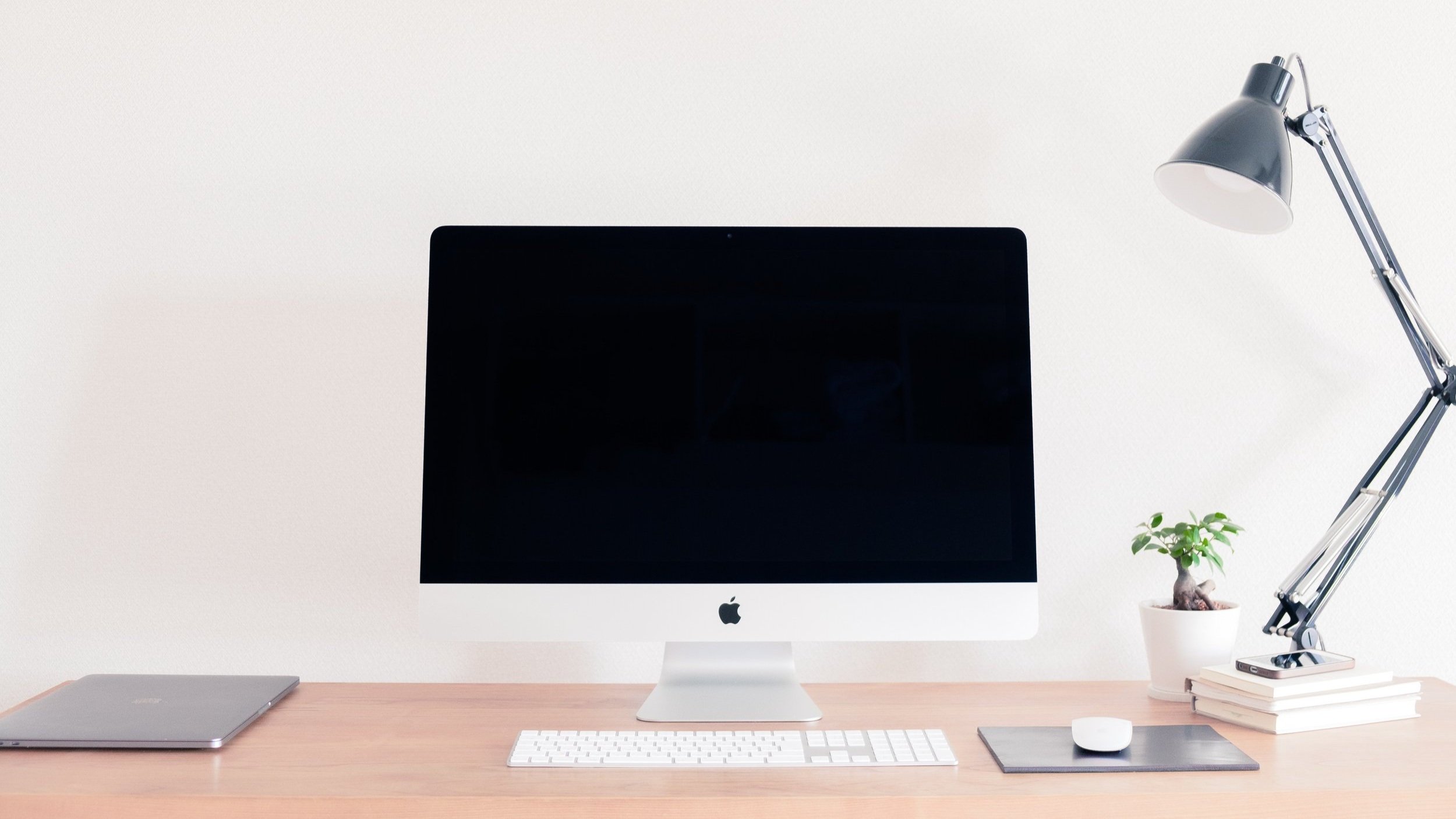How to set up your desktop for success
Photo by Sora Sagano on Unsplash
People often ask me what my work layout looks like; the literal configuration of my desktop. And while there are as many ways to set up a productive workspace as there are people in the world, I thought I’d go ahead and share my layout, as well as the reasons and theory behind it, in case it can help to inform how you want to tweak your set up.
My current set up:
After a year of living and working abroad from a 13” laptop screen, I was ready for more. So, I uncharacteristically spent some money on a wide, curved gaming monitor. Ridiculous, I know. But I LOVE it. I bought it because whenever I’ve had a set up with 3 monitors, I always felt this was the most productive layout for me. And the giant curved monitor is like having 3 monitors in one. It’s a thing of beauty. But I digress.
So, what do I have on this monitor?
On the left, my calendar, so that I’m always aware of what’s coming up next and how much time I have left. In addition to my standard calendar with my appointments, I keep a toggle-able “time-blocking” calendar that overlays my standard calendar. In this way, my calendar always shows me exactly what I’m supposed to be doing or working on right now. It’s a visual representation of what I’ll do and work on all day. Because I’ve planned in advance, I just get to execute.
On the right, it’s my task system. My task system is open and in front of me ALL the time. My task system is not just a repository, it’s the engine that drives my work. It’s my external brain. In fact, my system is so complete and so foolproof that I trust it implicitly. I you asked me what I need to do today, I’m gonna have to check my task system to find out. I don’t store that stuff in my brain anymore.
And you know what? No one wants to update a task list. And that includes me. Which is why it’s open all the time. I do a task, I update the task, and then I move onto the next task. My “today” list gets shorter as I go, meaning I’m getting that nice dopamine hit of checking things off the list, while seeing my list getting shorter, as I get closer to the day’s end.
In the middle, it’s what I’m working on right now. This takes up most of my central field of vision. I can single task instead of multitask because the only tabs open are those I’m working on right now. While the calendar and task system stay where they are throughout the day, this middle section changes based on what I’m working on right now.
My workflow:
It goes like this: I glance left at my calendar to see what I’m supposed to be doing. I check my task system for the details. I start working on the task or project.
When it’s time for the next task or meeting, I update what I just did in my task system and move onto the next item in the calendar.
And so it goes, until I’m done for the day.
Did you notice anything missing in this set up?
Perhaps you’re wondering “but what about email and Slack?”.
Email and slack will never get to take up a coveted, static place, to the right or to the left. Communication apps sometimes live in the center, if that’s the thing I’m doing at the moment. If it’s time to process email, email will be in the center. But if I’m doing anything else, then email is hidden away, because when it’s not time to process it, it’s merely a distraction to my goals.
Now, this is my ideal set up. But, trust me, I’ve worked in many less ideal situations. As I mentioned, I spent a year working abroad from a 13” laptop with no external monitor. So what did I do then? I had a modified version of the system above. I had a mini 8x10 whiteboard, and I used to copy my schedule on it every day and keep it to the left of my laptop. I made my task system really skinny and scooted it over all the way to the right of my screen. And the bulk of the screen was given over to the task at hand.
You don’t need the ideal set up for optimize for what works for you, right now.


